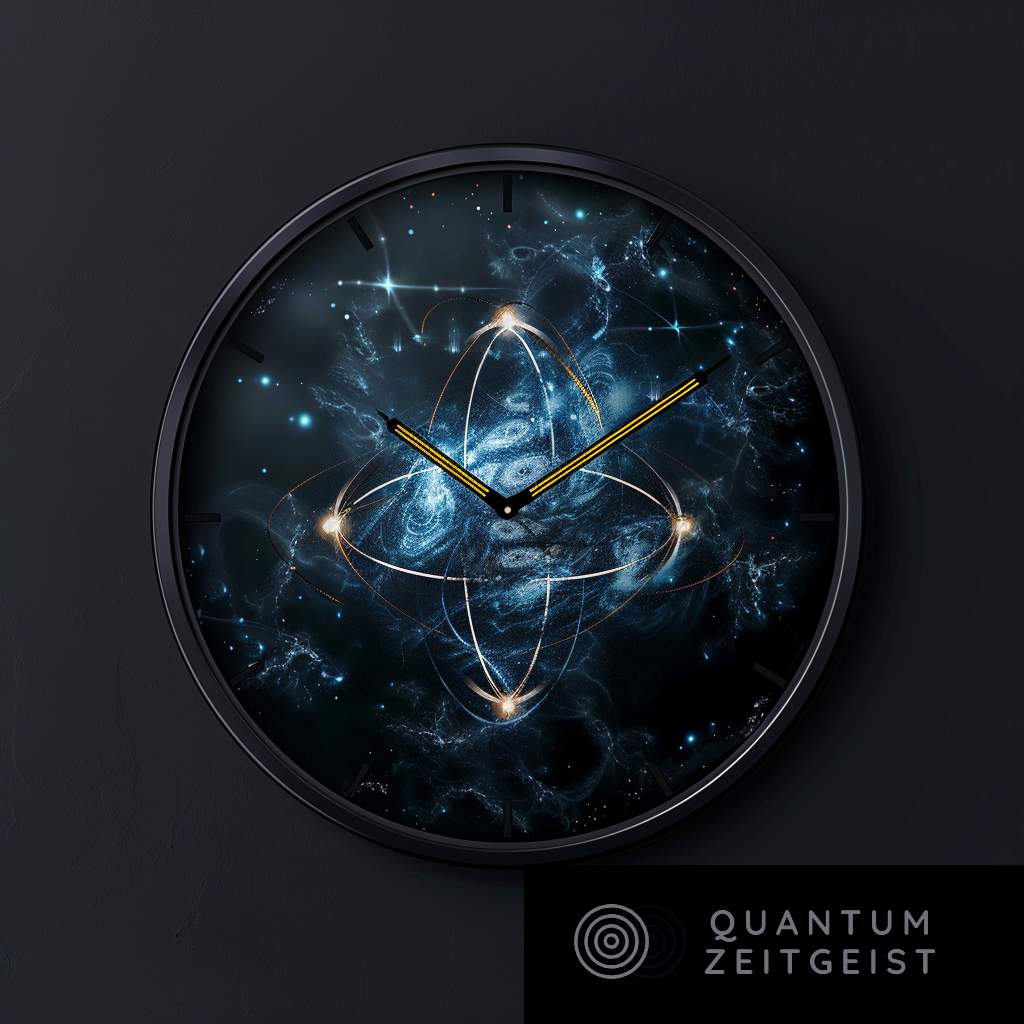A research team from JILA University of Colorado, National Institute of Standards and Technology, and University of Strasbourg has explored the potential of multiqubit gates and Schrödinger cat states to enhance the precision of optical atomic clocks. The study demonstrates a fractional frequency instability below the standard quantum limit using Greenberger-Horne-Zeilinger (GHZ) states of up to 4 qubits. The researchers also prepared a cascade of varying-size GHZ states to perform unambiguous phase estimation over an extended interval. This research marks a significant step forward in quantum-enhanced metrology and opens up new possibilities for the development of highly precise optical atomic clocks.
What is the Significance of Multiqubit Gates and Schrödinger Cat States in an Optical Clock?
The research paper titled “Multiqubit gates and Schrödinger cat states in an optical clock” by Alec Cao, William J Eckner, Theodor Lukin Yelin, Aaron W Young, Sven Jandura, Lingfeng Yan, Kyungtae Kim, Guido Pupillo, Jun Ye, Nelson Darkwah Oppong, and Adam M Kaufman from JILA University of Colorado, National Institute of Standards and Technology, and University of Strasbourg, explores the potential of multiqubit gates and Schrödinger cat states in enhancing the precision of optical atomic clocks.
The study focuses on the development and application of a family of multiqubit Rydberg gates to generate Schrödinger cat states of the Greenberger-Horne-Zeilinger (GHZ) type with up to 9 optical clock qubits in a programmable atom array. The researchers demonstrate a fractional frequency instability below the standard quantum limit using GHZ states of up to 4 qubits. The research also addresses the challenge of improving the optimal achievable clock precision with GHZ states due to their reduced dynamic range.
The researchers prepare a cascade of varying-size GHZ states to perform unambiguous phase estimation over an extended interval. These results demonstrate key building blocks for approaching Heisenberg-limited scaling of optical atomic clock precision.
How Does Quantum Systems Revolutionize Sensing and Measurement Technologies?
Quantum systems have revolutionized sensing and measurement technologies, spanning a wide range of applications from nanoscale imaging with nitrogen vacancy centers to gravimetry with atom interferometers and timekeeping based on optical atomic clocks. A major precision barrier for such devices is the quantum projection noise (QPN) arising from inherently probabilistic quantum measurements.
The fundamental precision bound given by quantum theory is the Heisenberg limit (HL) with 1/N-scaling. Improving measurements from the standard quantum limit (SQL) towards the HL using entangled or nonclassical resources is the central thrust of quantum-enhanced metrology. This approach has already yielded benefits in the detection of gravitational waves and the search for dark matter.
What is the Intersection of Programmable Atom Arrays with Optical Atomic Clocks?
The intersection of programmable atom arrays with optical atomic clocks provides a novel opportunity in this endeavor. Programmable atom arrays have emerged as one of the leading architectures for quantum information processing, with advances in Rydberg-gate design now enabling controlled-phase (CZ) gate fidelities as high as 0.995.
Optical atomic clocks now routinely achieve fractional frequency uncertainties at or below the 10^-18 level, with synchronous comparisons allowing for stability near or at the SQL. Merging these capabilities becomes possible with tweezer-controlled optical atomic clocks, which have demonstrated a relative instability of 5 * 10^-17τ^-9, where τ denotes the averaging time in seconds. The integration of high-fidelity entangling gates for generating metrologically useful many-body states in a clock-qubit atom array serves as a natural path towards scalable entanglement-enhanced measurements at the precision frontier.
What is the Generation and Use of Schrödinger Cats?
Of particular interest is the generation and use of Schrödinger cats, coherent superpositions of two macroscopically distinct quantum states. Specifically, the maximally entangled GHZ-type cat state of N-qubits accumulates phase N-times faster than unentangled qubits, thus saturating the HL. However, GHZ states also suffer from increased sensitivity to dephasing noise and fragility to decay and loss, making them difficult to create and use.
This delicate nature is a core reason that large GHZ-state production has become a standard benchmark for quantum processors. On the other hand, quantum metrology faces the key question of whether such fragility compromises the practical utility of these states. A growing number of small-scale demonstrations suggest that GHZ states can indeed perform below the SQL in a broad range of contexts, though their application to clock operation has remained largely unexplored in experiments.
How is the Generation and Metrological Performance of GHZ States Investigated?
In this article, the researchers experimentally investigate the generation and metrological performance of GHZ states in an array of strontium clock qubits. These explorations mark the first realization of GHZ states in a neutral-atom optical clock, as well as the first time that GHZ states have been used for below-SQL performance in an atom-laser comparison.
Underlying these results is the extension of the time-optimal Rydberg-gate toolkit to a class of multiqubit operations for producing fully connected states. This research provides a significant step forward in the field of quantum-enhanced metrology and opens up new possibilities for the development of highly precise optical atomic clocks.
Publication details: “Multi-qubit gates and ‘Schrodinger cat’ states in an optical clock”
Publication Date: 2024-02-25
Authors: Alec Cao, William J. Eckner, Theodor Lukin Yelin, Aaron W. Young, et al.
Source: arXiv (Cornell University)
DOI: https://doi.org/10.48550/arxiv.2402.16289

